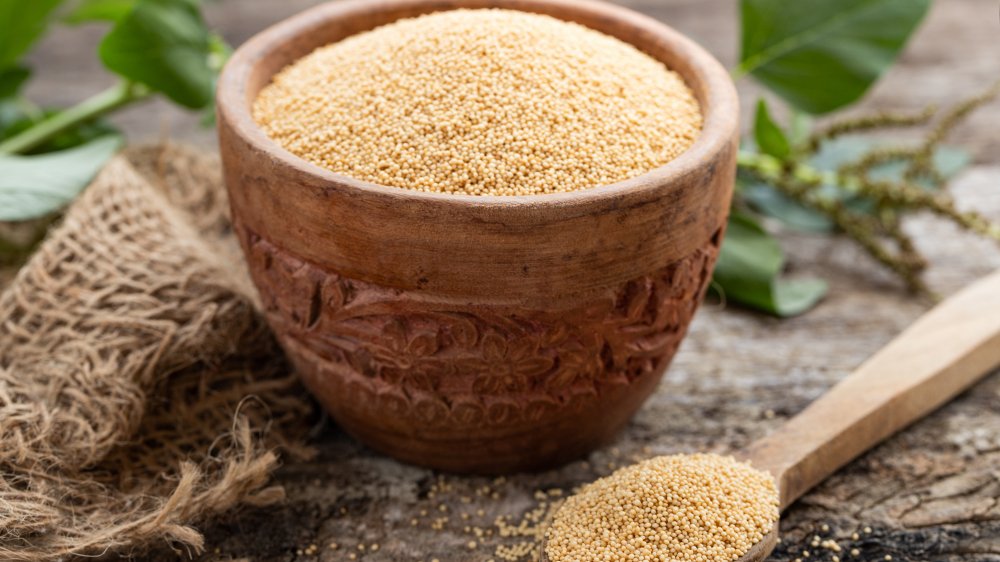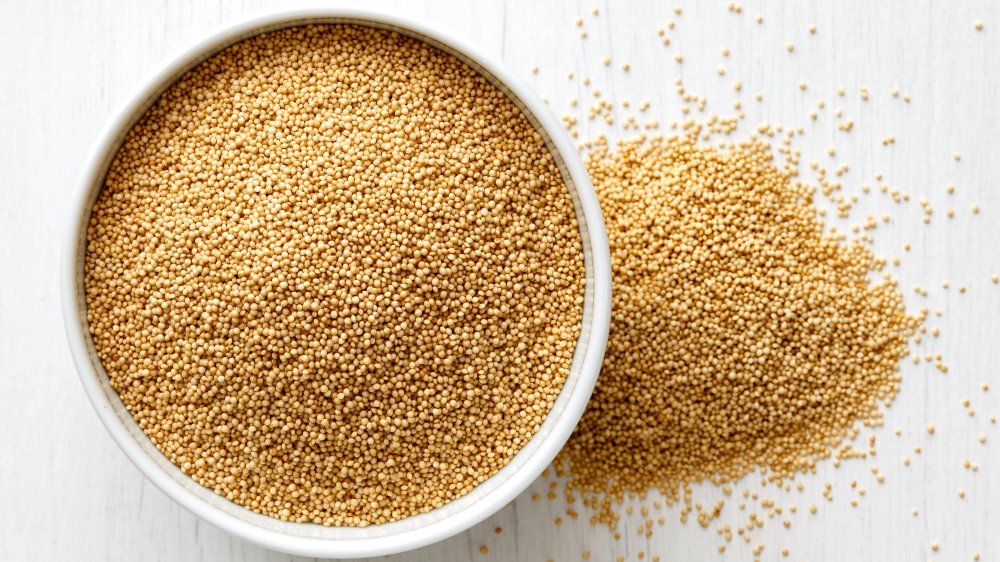You Should Never Eat Raw Amaranth. Here's Why
The pseudocereal, amaranth has gained popularity for its health benefits and its impressive nutritional profile. According to Healthline, amaranth is basically made up of over 60 species of grains that have been around for around 8,000 years. It typically has a nutty flavor and is versatile in terms of the dishes it can be used for. It's also gluten-free and has high levels of protein, antioxidants, fiber, and other crucial nutrients.
In a Reddit post, an amaranth enthusiast wrote about their love for the grain and its unique benefits. "Amaranth's taste is so mild it's almost tasteless, so it can be combined with almost everything and the only consequence is that the original taste is slightly diluted," they wrote before adding that they've used amaranth in as many ways as possible, including with chocolate milk while preparing porridge, to add texture to a stew, a substitute for flour while preparing a rich soup, or even sauce. They also said that amaranth is incredibly affordable and also has a solid shelf life.
That said, amaranth should never be consumed raw. This is why.
Eating raw amaranth may prevent you from getting its nutritional benefits
The issue with eating amaranth raw is that in its uncooked form, it has aspects that can prevent the absorption of nutrients in our bodies, as explained by USA Emergency Supply. Thus, it's a good idea to always cook the grain. That goes for whether you're feeding it to a person or a pet.
One of the best ways to make amaranth is to boil it for around 20 minutes and use it as a breakfast cereal. Or you can even add it to other dishes to work with texture and improve a dish's nutritional benefits. For example, try adding amaranth to homemade granola for a bit of crunch, use it when baking bread, or add amaranth to your vegetable salad. When you're confused about how to make soup or gravy thicker, use amaranth for a texture that's easy to achieve and might just leave you feeling satiated and happy.

